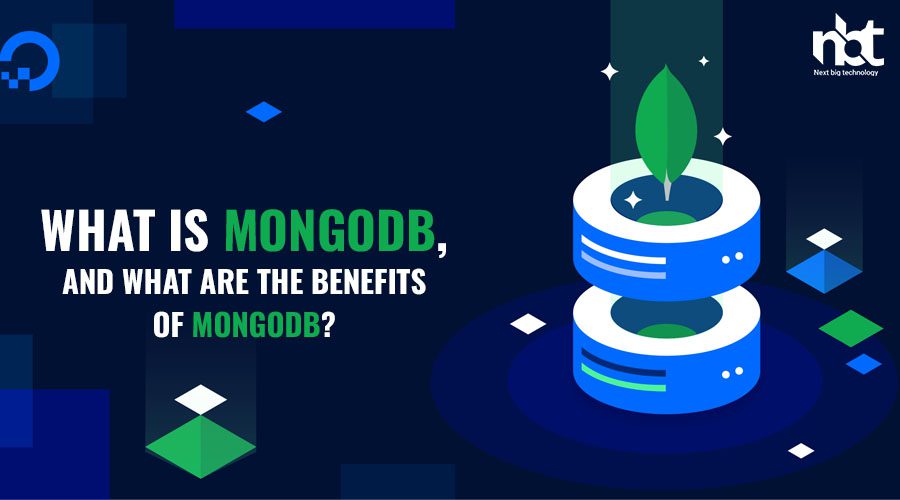After going over what MongoDB can do, it’s time to examine its strengths and weaknesses. A non-relational database is a good way to describe it.
So, it’s helpful to compare it to other relational database management systems to see if and where it meets our expectations. We hope to learn about the pros and cons of the popular NoSQL database MongoDB by the end of this lesson.
Table of Contents
This post will detail each of these topics and show how MongoDB could help your business.
Programmers in the cloud can use a global data platform.
MongoDB is not just a database, though. It is much more than that. A developer data platform with all the features. MongoDB Atlas is the company’s cloud service, and it comes with a set of tools that work together with your database. The Performance Advisor will, among other things, give you tips on improving your database’s performance.
- Atlas Search is a full-text search engine that uses the same MongoDB Query API as regular searches.
- With the help of MongoDB Charts’ easy-to-use interface, you can make beautiful dashboards and visualizations.
- Multi-cloud deployment right out of the box on any major cloud provider.
Multiple Document Formats
MongoDB is based on documents, making it easy to model and work with data in many structures. MongoDB’s BSON data format is based on JSON. It lets objects in the same collection have different numbers and types of fields (say, a middle name on a user only when applicable or region-specific information that only applies to some records).
MongoDB lets you make detailed schemas and check that data is correct. This ability to change is very helpful when working with real-world data and adapting to new situations or needs.
Also read : MongoDB vs Firebase: Which Is the Best Database In 2023
Having access to the source code and getting a lot of help
Most databases need cumbersome wrappers, like Object-Relational Mappers (ORMs), to turn data into Object format so it can be used in code. Because MongoDB uses a document-based data model, it can be used with the data structures common to all programming languages (e.g., dictionaries in Python, objects in JavaScript, Maps in Java, etc.).
Methods of the building that can be changed to fit new situations
If you’ve ever had to temporarily shut down your service so you could rearrange your database, you’ll be glad to know that MongoDB is flexible enough to meet your needs.
Even though we try to make efficient processes and learn from our mistakes and past failures, the database is usually the slowest part. You don’t have to restart MongoDB when you change the schema, and you can start adding new documents at any time.
Using a lot of data to ask questions
What’s the point of having a database if you need help to get the information easily? You’ll only need to do a few complex queries on MongoDB, but they’re there if you do. The database is set up so that data is easy to find and rarely needs to be joined or moved around.
With the MongoDB Query API, you can write complex analytics pipelines in just a few lines of declarative code and run in-depth document queries.
Sharding makes it easy to scale horizontally.
MongoDB was made with distributed architecture in mind when it came to databases. It’s best to make clusters with real-time replication and split large or high-throughput collections across multiple clusters if you want to keep performance and grow horizontally.
Very good efficiency (speed)
Instead of using relational databases’ time-consuming join operations, MongoDB’s document model lets information be put together in a single document. This makes queries much more efficient because they only need to make one call to the database to get all of the results. The $lookup aggregation pipeline stage makes it possible to do a left outer join with the same speed as an RDBMS.
The insert and update of many features of MongoDB speed up writing by letting multiple records be added and changed simultaneously. Compared to batch writes in regular databases, these two features give a big boost to performance.
Easy and quick to set up
With MongoDB Atlas, it’s easy to make and set up a MongoDB cluster. With just a few clicks in the easy-to-use interface, a new, free instance that stays up and running can be set up. With the connection string we’ve given you, you’ll be able to connect to your database in a matter of minutes.
There are many different ways to install and set up MongoDB to work on your local machine. Either the community edition or the business edition can be installed on a server without extra software. You can also make your own MongoDB container or use one the community has already made.
Cost-effective
MongoDB has a lot of options that can be changed to fit your needs. If you use MongoDB Atlas in the cloud, you can change the size of each instance to meet your needs. You can set up your cluster to scale itself automatically if you need to. This way, you can deal with sudden traffic spikes without paying extra.
Documentation in full and technical help
When getting help with MongoDB, we’ve got your back. MongoDB’s website for documentation has a lot of useful tools, such as a lot of how-to guides for new users. You can also post your questions on a community forum so that other people can answer them.
If you want to learn more about what MongoDB can do, you can check out MongoDB University. MDBU has a lot of free courses where you can learn everything you need to know about MongoDB.
MongoDB’s problems
All things are incomplete and imperfect in some way. MongoDB has a lot of good things about it, but it also has some bad things. Here, let’s talk about a few of them.
Not Permitted to Join
MongoDB doesn’t support the way relational databases do. But the functionality of joining can be reached through human coding. But this could slow down performance or make it take longer to do something.
A lot of people want RAM.
When you use MongoDB, you can save both the names and the values of your keys. There is also a lot of duplicate data because joins need to be fixed. So, more and more memory is being used that can be something other than that.
Thanks for reading our post “What is MongoDB, and What are the Benefits of MongoDB”, please connect with us for any further inquiry. We are Next Big Technology, a leading web & Mobile Application Development Company. We build high-quality applications to full fill all your business needs.













